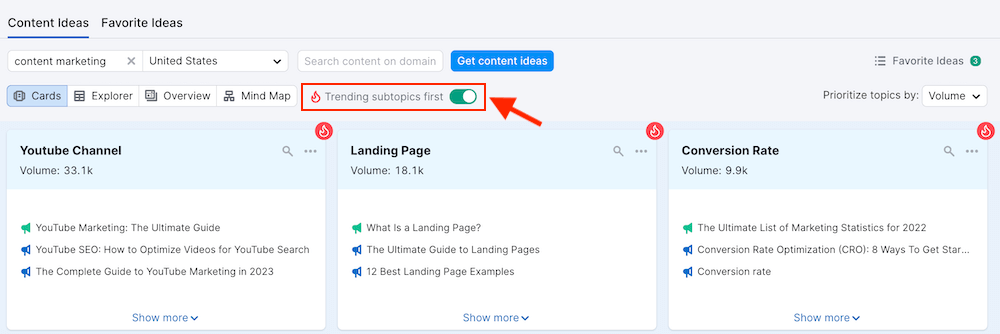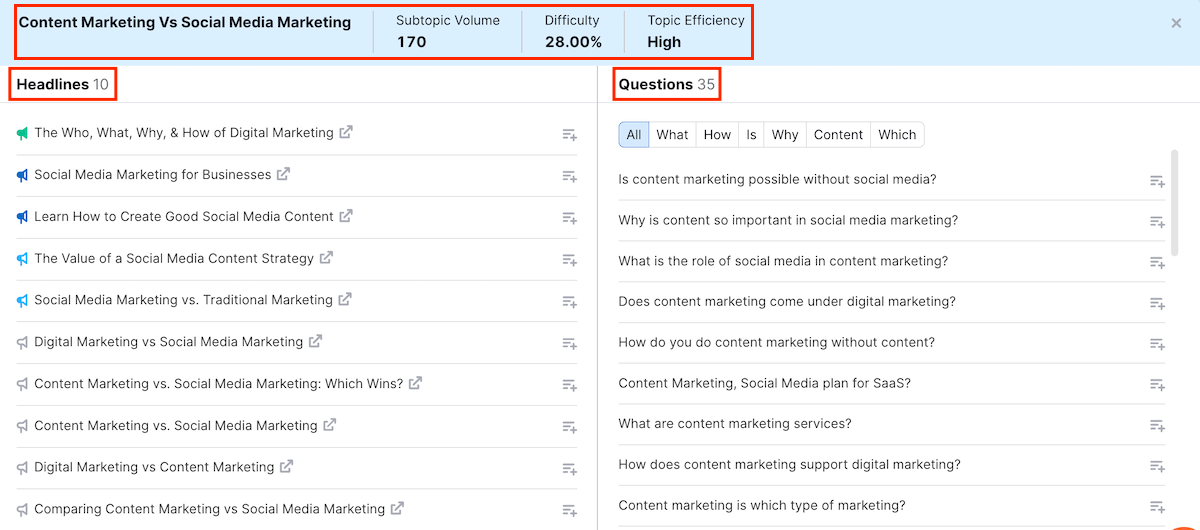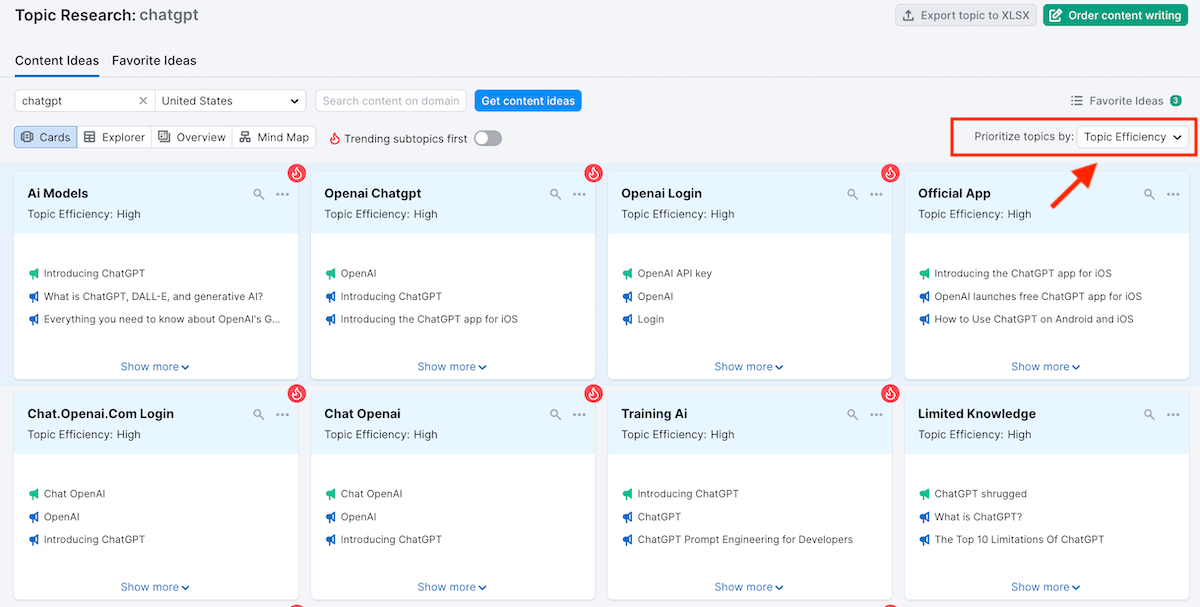
Content marketing is a powerful tool for businesses of all sizes. By creating high-quality content that is relevant to your target audience, you can attract new customers, build relationships with existing customers, and boost your brand awareness.
But how do you know if your content marketing is working? And how can you make sure that you are getting the most out of your investment?
That’s where Semrush comes in.
In this article, we will show you how to use
- How to identify the right keywords for your content
- How to create high-quality content that is optimized for search engines
- How to analyze your competitors’ content to identify content gaps
- How to improve your content marketing strategy
By following the tips in this article, you can use
Important note: You’ll need an active
Table of Contents
6 Actionable Ways to Use Semrush for Content Marketing
1. Brainstorm New Content Ideas
Content marketing success largely depends on publishing fresh new content that keeps your audience hooked and coming back for more.
That said, manually researching content ideas can be a time-consuming process.
This is where the Semrush Topic Research tool can automate the whole process and save you hours of time, making it much easier for you to find fresh and engaging topics to write about.
With Topic Research, you can elevate your content brainstorming efforts and generate a wealth of ideas for any given topic you give a search on.
To get started, navigate to:
Content Marketing > Topic Research
Enter a topic into the search box and hit the “Get content ideas” button to get a list of popular subtopics and headlines around the topic.
The resulting report will present your subtopics in the form of cards with subtopics. This is the default setting — you can change it to Explorer (list), Overview, or Mind Map.
To prioritize the trending subtopics, enable the “Trending topics first” option indicated by a fire icon. This setting ensures that you see the most popular subtopics from the past 60 days at the top.
You can also sort the subtopics by volume, difficulty, or topic efficiency.
By selecting any of these cards, you can access additional information such as the top headlines, frequently asked questions, and related searches related to the topic.
If you see a bullhorn icon next to the title, it indicates the level of success in terms of backlinks. The green icons represent pages that have received a significant number of backlinks.
As you can see, the Topic Research tool is an absolute game-changer when it comes to generating a compelling list of trending topics. Whenever you find yourself in need of inspiration for writing captivating blog posts, there’s no better go-to tool than
2. Analyze Your Competitors’ Content
As Tiger Woods once said, “Competition is a great thing. It keeps you on your toes.” This is especially true in the world of content marketing.
By analyzing your competitors’ content, you can learn what they are doing well, what they are doing poorly, and what topics they are covering.
This information can help you check for content gaps between you and your competitors. This essentially means finding topics that your competitors are covering on their website, but you are not.
You can use the Topic Research tool to analyze your competitors’ content.
Just enter their domain in the search box alongside your target keywords.
This will show you all the topics your competitor is covering that appear in Google’s top 100 search results.
If you notice any topics that you haven’t covered yet generating a decent amount of organic traction, add them to your content editorial calendar.
3. Generate Actionable Briefs for SEO-friendly Content
When it comes to creating SEO-friendly content, actionable briefs are your secret weapon. They give you clear guidance, help you optimize for search engines, and engage your audience.
With Semrush’s SEO Content Template, you can effortlessly craft SEO-friendly content. This tool provides you with a ready-made template and SEO recommendations tailored to your target keywords.
These SEO recommendations are based on actual content from the Google top 10 rivals for your target keywords.
Navigate to:
Content Marketing > SEO Content Template
Enter your target keywords in the search box and hit the “Create content template” button.
Semrush will then generate a template with recommendations on:
- Semantically related keywords – These are keywords that are closely related to your target keywords. By adding some of these keywords in your content, you can enhance its relevance, depth, and comprehensiveness, ultimately improving its overall SEO quality.
- Backlinks – List of relevant websites you can target for backlinks.
- Readability – The readability score is based on the Flesch reading ease score formula and an average of your top 10 organic competitors on Google for the target keywords.
- Text length – The ideal text length you should target based on an average of your top 10 organic competitors on Google.
Additionally, you can also view the top 10 competing articles on Google for your target keywords…
… And see how these competitors are using your target keywords in their content.
Semrush’s SEO Content Template is the perfect tool to use if your goal is to outrank your organic competitors for your target keywords on Google.
4. Optimize Your Content for SEO
Once your content is ready to be published, you’ll need to ensure that your copy is fully optimized. In other words, you need to improve your content’s readability, pick the right keywords, satisfy search intent, and evaluate the post’s SEO quality.
To that end, you can use Semrush’s SEO Writing Assistant (SWA) to ensure your new post has all the essential SEO elements to rank higher in Google SERPs.
SEO Writing Assistant allows you to check your content’s originality and SEO potential in real-time. It provides you with keyword recommendations, readability score, SEO score, and plagiarism check.
While you can access SEO Writing Assistant from your
If you use Google Docs to write your posts, you can install the SEO Writing Assistant add-on. Once it’s installed, you’ll find it in the “Extensions” tab of your Google doc.
On WordPress, you can install and activate the SEO Writing Assistant plugin. Once it’s activated, you can visit the page or post that you’d like to optimize and click on “Connect SEO Content Template” by logging in to your
You can utilize the following features to fine-tune the SEO of your content:
- Readability Score – Enhance the readability of your articles by ensuring they are well-structured, easily comprehensible, and engaging to your target audience.
- SEO Recommendations – Use SWA’s updated SEO recommendations to optimize your content and improve its search visibility.
- Plagiarism Checker – The Originality metric checks for signs of plagiarism in your content. It presents the overall percentage and the number of copied words in your article by comparing it with existing content on the internet.
- Rephraser – The “Rephraser” feature lets you rephrase, simplify, expand, or summarize your posts using AI to help them rank higher in SERPs.
- Ask AI – You can click on the “Ask AI” button to ask AI any question. AI will then generate an answer that you can include in your content.
Armed with
Related: How to Improve Your Content Using AI with SEO Writing Assistant
5. Boost the Efficiency of Your Content Creation Process
Ensuring an efficient content creation process is vital as it saves time, increases productivity, maintains consistency, and improves content quality.
Semrush’s Topic Efficiency metric can be particularly helpful here as it shows you which topics are more likely to offer better results with the least effort.
By sorting the results in your Topic Research report by “Topic Efficiency,” you can collect a list of potential topics that are entirely tailored to your audience’s needs and interests.
The Topic Efficiency metric is based on the topic’s search volume and keyword difficulty, so it helps you judge how rewarding going after a certain topic would be.
A high Topic Efficiency is achieved when there is both a high search volume and low difficulty.
By targeting topics with high topic efficiency, you can maximize your productivity while maintaining a focus on creating content that deeply connects with your audience.
6. Develop a Marketing Calendar
Developing a marketing calendar is a sure-fire way to streamline content production, improve workflow efficiency, and boost collaboration among team members.
Whether you’re working solo or managing a large team, a marketing calendar will enable you to strategically align your content with key industry trends.
Semrush’s Marketing Calendar tool allows you to organize, coordinate, and track all of your marketing campaigns from one place.
Marketing Calendar also works as a task management tool — you can assign tasks to your team members, create step-by-step checklists for each task, and set deadlines.
Furthermore, you can streamline your reporting process and monitor your campaigns’ progress.
Final Thoughts
Content marketing holds immense significance in the world of digital marketing. It acts as the bedrock for connecting and engaging with your target audience online.
While it may be challenging, using a robust content platform like
Sign up for a 14-day free trial to
Related Articles

























